Nerve cells form long-term memories with the help of an inflammatory response, study in mice finds.
Get Started for FREE
Sign up with Facebook Sign up with X
I don't have a Facebook or a X account

| Tags |
|---|
 Your new post is loading... Your new post is loading...
 Your new post is loading... Your new post is loading...
BigField GEG Tech's insight:
In vitro embryo models supported by methods development in adjacent fields have revolutionized our understanding of embryogenesis.
After 20 months after interrupting antiretroviral therapy, HIV was undetectable in the patient’s blood.
BigField GEG Tech's insight:
After 20 months after interrupting antiretroviral therapy, HIV was undetectable in the patient’s blood. A man known as the “Geneva patient” has become the latest person in the world to be cured of HIV after a stem cell transplant for cancer treatment. While there have been five other known cases of people who have been cured of HIV - meaning they have been declared in long-term remission - his case is so far unique. He’s the only one who received stem cells from a donor who does not have a rare gene mutation - CCR5 - that blocks HIV from entering cells.
But the risks associated with the procedure mean it is unlikely to be widely used in its current form.
BigField GEG Tech's insight:
A 53-year-old man in Germany has become at least the third person with HIV to be declared cleared of the virus after a procedure that replaced his bone marrow cells with HIV-resistant stem cells from a donor.
BigField GEG Tech's insight:
A type of freshwater plankton has become the first organism seen thriving on a diet of viruses, according to a new study by researchers from the University of Nebraska-Lincoln in the US.
For several years now, the CRISPR/Cas9 gene scissors have been causing a sensation in science and medicine.
BigField GEG Tech's insight:
Within the defense mechanism of bacteria, the so-called type III variants of the CRISPR gene produce small signal molecules. With the help of these small molecules, bacteria trigger a complex contingency plan that ensures that a virus can be fought optimally and on a broad front. Researchers have studied how this works and have discovered that the small signal molecules bind, among others, to a protein called CalpL, which thus becomes an active "protease". Proteases are enzymes that cleave proteins and thus function as protein scissors. Proteases are also used in the human immune system to transmit information at high speed. Finally, the researchers also found the target of their newly discovered protein scissors. It cuts a small protein molecule called CalpT, which acts as a safety lock for CalpS, a third protein molecule. CalpS is a very well-guarded protein that is released by the whole mechanism. It will drive the transcription machinery to specific genes, switching the bacteria's metabolism to defense. With the discovery of this complicated signaling cascade, the researchers have now uncovered a whole new aspect of CRISPR systems. The study was published in the renowned scientific journal "Nature".
BigField GEG Tech's insight:
Miniature human-brain-like structures transplanted into rats can send signals and respond to environmental cues. Researchers grew the structures from human stem cells and then injected them into the brains of newborn rat pups. After six months, the organoids became fully integrated into the rat brains. The approach could lead to a way to test therapies for human brain disorders. But some researchers have ethical concerns about such experiments: creating rodent–human hybrids could harm the animals or produce animals with human-like brains
Researchers assessed the impact of gene amplification on cross-species adaptation.
BigField GEG Tech's insight:
In a recent study published on the bioRxiv preprint server, researchers evaluated the impact of gene amplification on cross-species adaptation. The researchers demonstrated that the impact of RhTRS1 gene amplification could effectively rescue viral replication in fibroblasts from partially resistant African green monkeys (AGMs). The team infected A549 cells with vaccinia virus (VACV) + RhTRS1 or the VACV strain named Copenhagen, expressing a beta-galactosidase (bg) reporter gene. The team explored whether amplification of rhtrs1 could increase the extent of viral replication in the absence of PKR. The team also infected RNase L competent A549 cells or regularly spaced short palindromic repeats with CRISPR in clusters of RNase L deletion present in existing A549 cells with VACV-RhTRS1, VACV-bg or AGM-A. The results of the study showed that A549 cells restricted VACV + RhTRS1 replication by nearly 10,000-fold compared to VACV-bg replication. The team noted that deletion of A549 PKR cells enhanced VACV + RhTRS1 replication by up to 1000-fold compared to PKR-competent cells. The team observed that RNAase L had no impact on VACV-bg replication.
Here we report application of human umbilical cord mesenchymal stem cell (HUCMSC)-derived therapy for pulmonary arterial hypertension (PAH). A 3-year-old female presented with heritable PAH associated with hereditary hemorrhagic telangiectasia and was treated for 6 months with serial intravascular infusions of conditioned media (CM) from allogenic HUCMSCs. The treatment markedly improved clinical and hemodynamic parameters and decreased blood plasma markers of vascular fibrosis, injury and inflammation. A comparative analysis of single-cell RNA sequencing data collected from three HUCMSCs and two human umbilical vein endothelial cell (HUVEC) controls identified eight common cell clusters, all of which indicated regenerative potential specific for HUCMSCs. The properties of HUCMSCs were validated by untargeted label-free quantitation of the cell and CM proteome, suggesting increased activity of regeneration, autophagy and anti-inflammation pathways and mitochondrial function. Prostaglandin analysis demonstrated increased HUCMSC secretion of prostaglandin E2, known for its regenerative capacity. Additional prospective clinical studies are warranted to confirm and further explore the benefits of HUCMSC-derived therapy for PAH. Hansmann et al. show that serial intravascular infusions of conditioned media produced by allogenic umbilical cord mesenchymal stem cells markedly improved the clinical features of a young child with severe pulmonary arterial hypertension. The multi-omic approach analyzing the transcriptome and the proteome of these stem cells isolated from four donors provides initial insight into their beneficial paracrine function.
BigField GEG Tech's insight:
A young girl survived an inherited form of pulmonary arterial hypertension thanks to umbilical cord cells.
BigField GEG Tech's insight:
BigField GEG Tech's insight:
The lack of pyrimidine diversity in meteorites remains a mystery since prebiotic chemical models and laboratory experiments have predicted that these compounds can also be produced from chemical precursors found in meteorites. Here the authors report the detection of nucleobases in three carbonaceous meteorites using state-of-the-art analytical techniques optimized for small-scale quantification of nucleobases down to the range of parts per trillion (ppt). In addition to previously detected purine nucleobases in meteorites such as guanine and adenine, they identify various pyrimidine nucleobases such as cytosine, uracil, and thymine, and their structural isomers such as isocytosine, imidazole-4-carboxylic acid, and 6-methyluracil, respectively. Given the similarity in the molecular distribution of pyrimidines in meteorites and those in photon-processed interstellar ice analogues, some of these derivatives could have been generated by photochemical reactions prevailing in the interstellar medium and later incorporated into asteroids during solar system formation. This study demonstrates that a diversity of meteoritic nucleobases could serve as building blocks of DNA and RNA on the early Earth. All DNA/RNA nucleobases were identified in carbonaceous meteorites. Having been provided to the early Earth as a component in carbonaceous meteorites, these molecules might have played a role for the emergence of genetic functions in early life.
BigField GEG Tech's insight:
She’s the third person ever to be cured. Researchers announced that the new approach holds the potential for curing more people of racially diverse backgrounds.
Recruitment of lymphocytes into tumors is critical for anti-tumor immunity and efficacious immunotherapy. We show in murine models that tumor-associat…
BigField GEG Tech's insight:
These studies provide critical insights into the mechanisms governing lymphocyte trafficking in cancer immunity and immunotherapy. |
From
www
Pig organs could provide temporary detox for people whose livers need time to recover or who are awaiting human donors.
BigField GEG Tech's insight:
Pig organs could provide temporary detox for people whose livers need time to recover or who are awaiting human donors.
As a human embryo grows, a set of molecules directs cells as they multiply and take on specific identities and spatial positions within the embryo.
BigField GEG Tech's insight:
The researchers found ways to recreate a simplified version of gastrulation in a dish by starting with a layer of induced pluripotent stem (iPS) cells, meaning they can differentiate to become any cell type in the body. Next, the scientists added a protein called BMP4, a key signaling molecule in gastrulation, which causes the cells in the box to begin forming the three layers of cells present in the embryo. All cells appear to receive the same BMP4 signal, however, some transform into one cell type while others become different cell types. When creating a gastrulation model, researchers observed that iPS cells contain proteins that are the building blocks of tight junctions. They also noted that tight junctions do not always assemble, and that tight junctions between adjacent cells appear to render cells impervious to BMP4 signals. To confirm the importance of tight junctions in gastrulation, the researchers used CRISPR genome-editing technology to suppress the production of TJP1, a protein crucial for tight junction formation in iPS cells. When they applied BMP4 to cells lacking the TJP1 protein, every cell was activated, not just the peripubic cells. This discovery forms the basis of a new method for efficiently producing these unique cells.
BigField GEG Tech's insight:
Researchers have captured the most-detailed images yet of human embryos developing in real time, using two common laboratory tools — fluorescent dyes and laser microscopes. Non-invasive imaging approach could lead to innovations in embryo screening.
BigField GEG Tech's insight:
Dalan Animal Health’s vaccine for American foulbrood, an aggressive bacterial disease, is the first for any insect in the United States.
Researchers at Johns Hopkins Medicine say they have created a laboratory-grown three-dimensional "organoid" model that is derived from human tissue and designed to advance understanding about how early stages of cancer develop at the gastroesophageal junction (GEJ) — the point where the digestive system's food tube meets the stomach.
BigField GEG Tech's insight:
Researchers have created a laboratory-developed, three-dimensional organoid model derived from human tissue and designed to understand the early stages of cancer in the gastroesophageal junction (GEJ), the point where the food pipe of the digestive system meets the stomach. Using CRISPR-Cas9, the researchers also eliminated two key tumor suppressor genes, TP53 and CDKN2A,c in the organoids. The dual inactivation of these genes made the cells more cancerous, with faster growth and microscopic features closer to malignancy. These altered organoids also formed tumors in immunodeficient mice. The team further found abnormalities in lipids that store energy but also perform a variety of other functions, and identified platelet activating factor as a key lipid upregulated in GEJ organoids. The researchers used WEB2086, which stopped the growth of implanted GEJ organoid tumors. WEB2086, a Food and Drug Administration-approved compound used to treat platelet diseases, inhibits platelet activating factor receptors in GEJ.
BigField GEG Tech's insight:
Interactions between respiratory viruses during infection affect transmission dynamics and clinical outcomes. To identify and characterize virus–virus interactions at the cellular level, the scientists coinfected human lung cells with influenza A virus (IAV) and respiratory syncytial virus (RSV). Super-resolution microscopy, live-cell imaging, scanning electron microscopy and cryo-electron tomography revealed extracellular and membrane-associated filamentous structures consistent with hybrid viral particles (HVPs). They found that HVPs harbour surface glycoproteins and ribonucleoproteins of IAV and RSV. HVPs use the RSV fusion glycoprotein to evade anti-IAV neutralizing antibodies and infect and spread among cells lacking IAV receptors. Finally, they show that IAV and RSV coinfection in primary cells of the bronchial epithelium results in viral proteins from both viruses co-localizing at the apical cell surface. Their observations define a previously unknown interaction between respiratory viruses that might affect virus pathogenesis by expanding virus tropism and enabling immune evasion. Chimeric particles are formed when influenza A virus and respiratory syncytial virus coinfect lung cells in vitro.
BigField GEG Tech's insight:
Some companies offer tests that rank embryos based on their risk of developing complex diseases such as schizophrenia or heart disease. Are they accurate — or ethical?
Researchers at the Department of Energy's Oak Ridge National Laboratory have definitively linked the function of a specific domain of proteins important in plant-microbe biology to a cancer trigger in humans, knowledge that had eluded scientists for decades.
BigField GEG Tech's insight:
Scientists set out to prove experimentally what they had first deduced from computational studies: that the apple plasminogen-nematode domain, or PAN, is linked to cell proliferation that drives tumor growth in humans and defense signaling during plant-microbe interactions in bioenergy crops. The association was first made when researchers explored the genomes of crops like poplar and willow. In the latest study, the research team identified four core amino acids called cysteine residues in the HGF protein essential for PAN domain function and studied their behavior in human cancer cell lines. They found that mutation of one of these amino acids, achieved using CRISPR-9, disabled the signaling pathway known as HGF-c-MET that is abnormally high in cancer cells, forcing them to multiply and spread rapidly. The team's findings, published in Nature Communications Biology, open a new avenue for the development of selective drug therapies to fight a variety of cancers such as those that start in the breast and stomach.
BigField GEG Tech's insight:
The metastatic spread of cancer is achieved by the haematogenous dissemination of circulating tumour cells (CTCs). Generally, however, the temporal dynamics that dictate the generation of metastasis-competent CTCs are largely uncharacterized, and it is often assumed that CTCs are constantly shed from growing tumours or are shed as a consequence of mechanical insults1. Here the scientists observe a striking and unexpected pattern of CTC generation dynamics in both patients with breast cancer and mouse models, highlighting that most spontaneous CTC intravasation events occur during sleep. Further, they demonstrate that rest-phase CTCs are highly prone to metastasize, whereas CTCs generated during the active phase are devoid of metastatic ability. Mechanistically, single-cell RNA sequencing analysis of CTCs reveals a marked upregulation of mitotic genes exclusively during the rest phase in both patients and mouse models, enabling metastasis proficiency. Systemically, they find that key circadian rhythm hormones such as melatonin, testosterone and glucocorticoids dictate CTC generation dynamics, and as a consequence, that insulin directly promotes tumour cell proliferation in vivo, yet in a time-dependent manner. Thus, the spontaneous generation of CTCs with a high proclivity to metastasize does not occur continuously, but it is concentrated within the rest phase of the affected individual, providing a new rationale for time-controlled interrogation and treatment of metastasis-prone cancers. A study of patients with breast cancer and mouse models demonstrates that most circulating tumour cells are generated during the rest phase of the circadian rhythm, and that these cells are highly prone to metastasize.
Elon Musk’s Neuralink is overtaken by a rival in a race to regulatory review.
BigField GEG Tech's insight:
Synchron Inc., which develops a so-called brain-computer interface and competes with Elon Musk’s Neuralink Corp., enrolled the first patient in its U.S. clinical trial, putting the company’s implant on a path toward possible regulatory approval for wider use in people with paralysis.
Powerhouse-pruning protein may also help make energy rapidly available for growing new blood vesselsA protein that helps keep our cell powerhouses working at a premium appears to also help make energy rapidly available when it's time to make new blood vessels.
BigField GEG Tech's insight:
Ushio-Fukai and Dr. Tohru Fukai reported in Nature Cell Biology that ROS rapidly modifies CTR1, a cell surface receptor that usually allows essential mineral copper to enter the interior, where its tasks include aiding angiogenesis. Modification of CTR1 prompts it to bind to the VEGF receptor, VEGFR2, also on the cell surface, and the united pair dives inside. This movement enables the sustained VEGFR2 signaling that is essential for making new blood vessels. The researchers also have evidence that Drp1 is also modified by ROS, prompting it to move from a passive state in the fluid part of the cell, or cytosol, to the mitochondria where it still promotes fission, which also produces the powerful hydrogen peroxide ROS. She says that active mitochondria are high users of oxygen and therefore, like NADPH oxidase, high producers of ROS in endothelial cells. The researchers showed that the ROS generated by mitochondria in turn activates AMPK, a key enzyme for regulating energy levels in cells and known to use glucose to rapidly generate enough energy to support important biological work such as making new blood vessels.
In a recent review published in the journal of Nature Medicine, researchers discussed the results of a two-year weekly effort to track and communicate significant developments in medical (artificial intelligence) AI. They included prospective studies as well as developments in medical image analysis that have narrowed the gap between research and implementation.
BigField GEG Tech's insight:
In a recent review published in the journal Nature Medicine, scientists discussed the results of a two-year weekly effort to track and communicate significant developments in medical AI. In particular, AI has been a game-changer in the crucial task of protein folding, which involves predicting the 3D structure of a protein from its chemical sequence. Improvements in protein structure prediction can reveal mechanistic information about a variety of events, including drug-protein interactions and mutation effects. With AI, non-invasive cancer screening, prognosis, and tumor origin identification are now possible. Moreover, deep learning has improved CRISPR-based gene editing by helping predict guide RNA activity and identifying anti-CRISPR protein families. According to one study, BioBERT, a model trained on a large corpus of medical literature, outperformed previous peers on natural language tasks such as answering biological questions. |



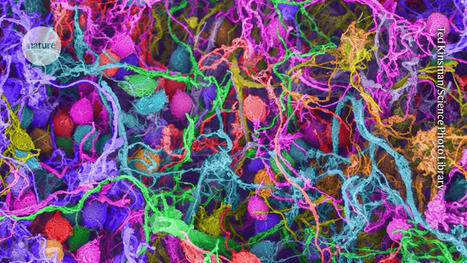


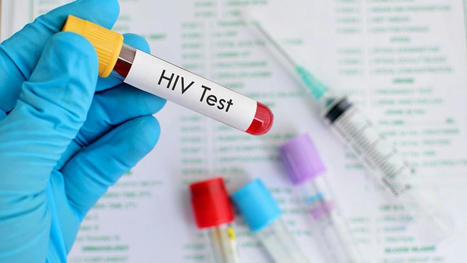
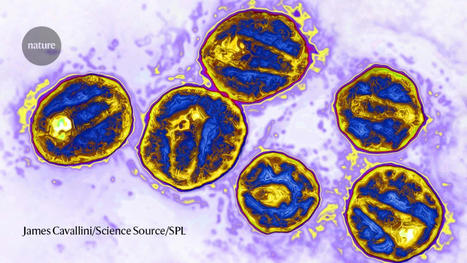
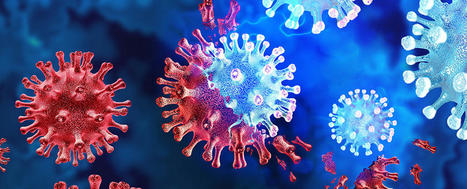
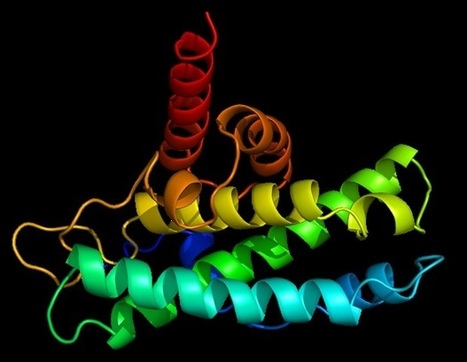

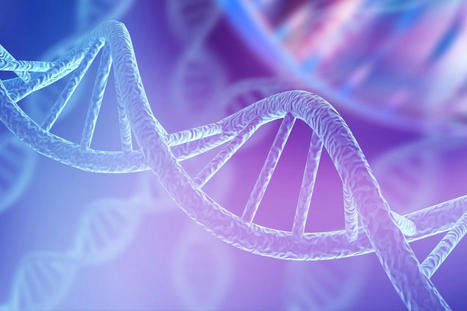

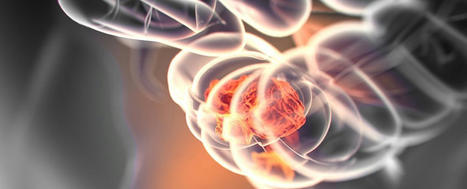
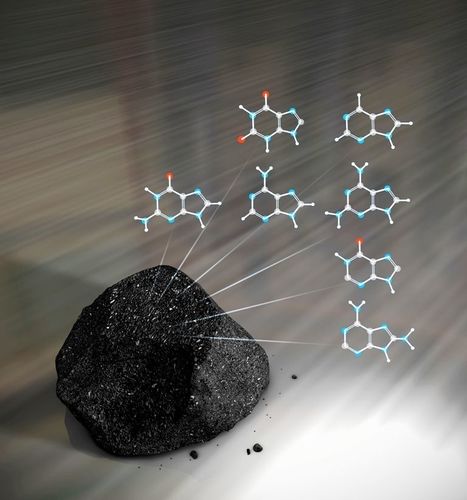
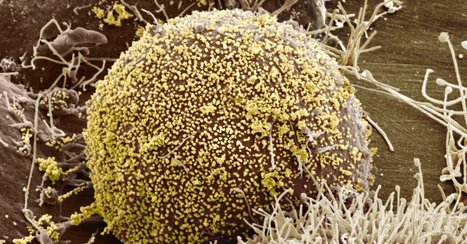
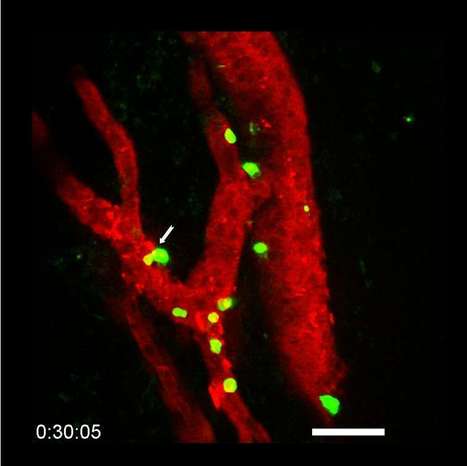
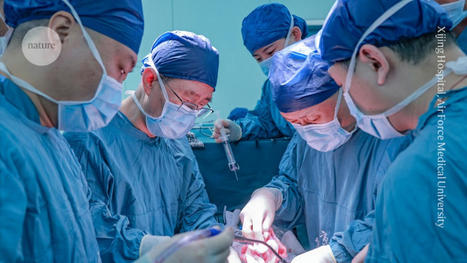
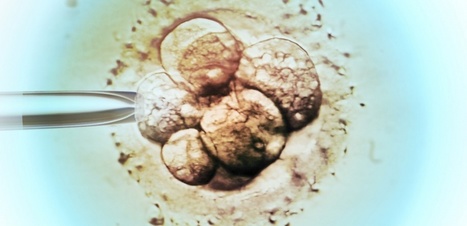

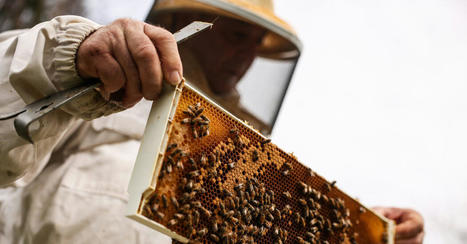
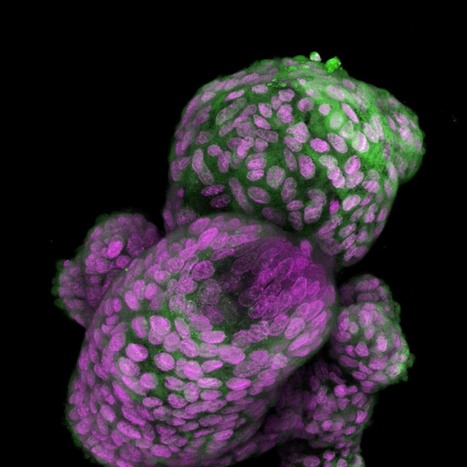
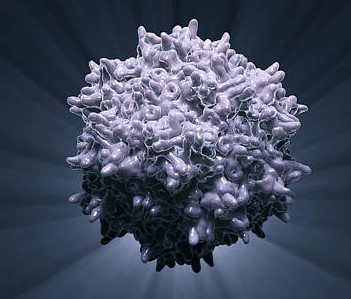

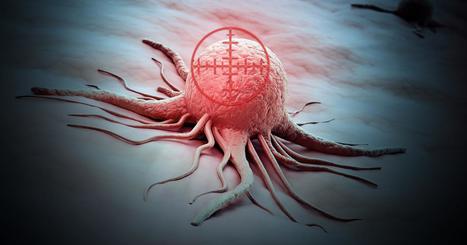








Nerve cells form long-term memories with the help of an inflammatory response, study in mice finds.